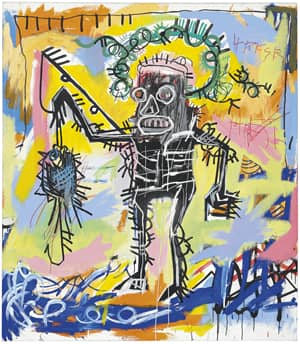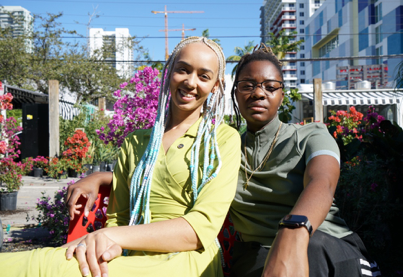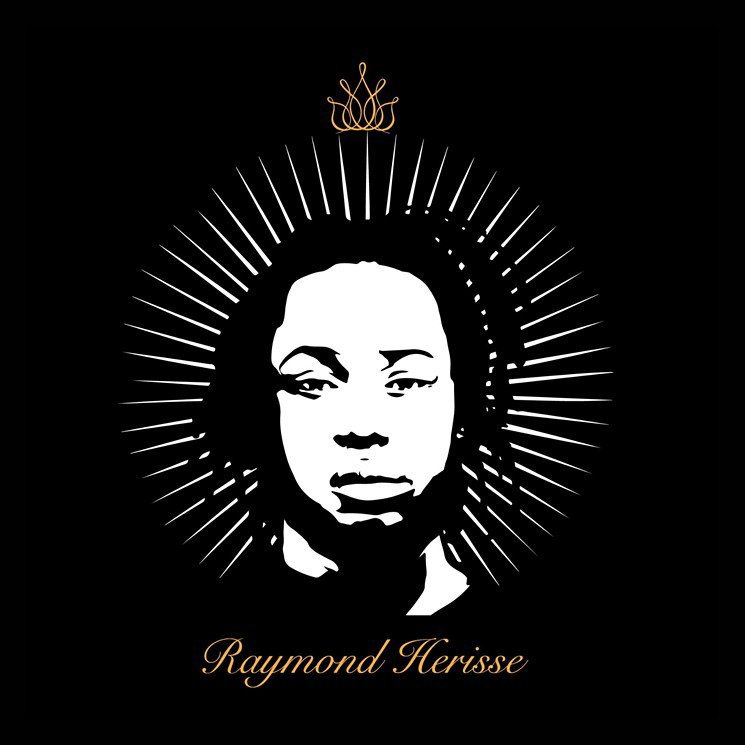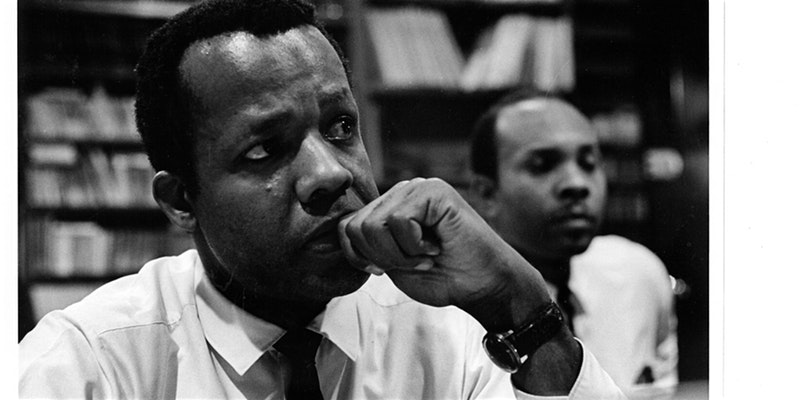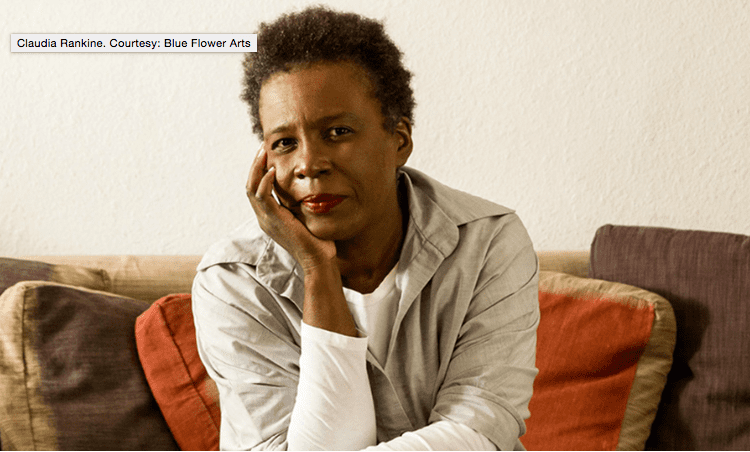Above: Jean Michel Basquait Untitled 1981
By William Cordova
A text in four parts…. sacred geometries in West Africa and the Congo to syncretic diaspora religions and spiritual beliefs in the Caribbean and Americas; Vodou, Hoodoo, Candomblé, Palo Mayombe and Santeria. Revolutionary celluloid as a form of visual incantation, through the lens of the late Afro-Cuban experimental filmmaker Nicolas Guillen Landrian. And finally, the Golden Age of Puerto Rican propaganda poster art (1957-1973) and its influences in contemporary Art.
“I’m not an abstractionist. I’m not interested in the relationship of color or form or anything else. I’m interested only in expressing basic human emotions: tragedy, ecstasy, doom, and so on”
-Mark Rothko
“to be in touch with senses and emotions beyond conquest is to enter the realm of the mysterious”
-bell hooks (Altars of Sacrifice: re-membering Basquiat)
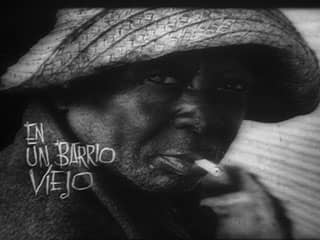
Above: Nicolas Guillen Landrian’s En Un Barrio Viejo.
SACRED CINEMA AND THE ROOTS OF REVOLUTIONARY CELLULOID
1960, Jean Michel Basquiat was born, during the infancy stage of the Cuban revolution, Nicolas Guillen Landrian, the grandson of famed Cuban poet Nicolas Guillen, left his studies in the Social Sciences to pursue filmmaking at The Cuban Institute of Cinema tographic Art and Industry (ICAIC). Graduating in 1963 Landrian quickly becomes a prolific short experimental filmmaker. Using celluloid to juxtapose the various complex layers of Cuban society; class, Race, gender, ethnicity, politics and religions. Landrian had a natural reverence towards Marxist cinema and the European Avant Guard. “A multiplicity that might sometimes seem contradictory, he developed a specific (sometimes polemic) political and filmic sensitivity connected to his experience that allowed him to address his object of concern differently, blending his films with a knowledge foreign or even suspect to most of his colleagues at the ICAIC and elsewhere.” 17 Nicolas Guillen Landrian’s first film after graduating from ICAIC, “En un Barrio Viejo” (1963) is a film that in many ways encapsulates, Basquiat’s own early awareness to “the radical fracture between image and sound, the breakdown of the sensory system which underpins the effectiveness and credibility to audiovisual and its relationship to power.”18
At the end of the film “En Un Barrio Viejo” a Santeria/Lukumi ritual is proceeded by the end credit “FIN” but then Ladrian adds “fin pero no es el fin,” (the end but not the end)… maybe suggesting the constant cyclical nature of life and death…
PUERTO RICAN POSTER ART / OSPAAAL
Jean Michel Basquiat lived in Puerto Rico from 1974 till 1976, incidentally, during the tail end of the Golden Age of Political Poster Art in Puerto Rico, 1957-1973. Still, growing up in NY and being pre-exposed to the visual arts through his Mother, Matilda, who was of Afro Puerto Rican descent, and an artist in her own right, would have given him an advantage and awareness to seek out or at least take note of the local art and culture scene during his time Puerto Rico. Conceptual Cuban Artist Felix Gonzales-Torres also lived/studied in Puerto Rico between 1976-1979. “Art Historian Elvis Fuentes stated that for Gonzales-Torres, “poster art opened two paths: “letter-ism” and the conceptual variant of the graphic arts. Also, the mass character of this production influenced printmaking, in particular the portfolios that became a popular format with large print runs. The idea was to bring art to the people. In terms of criticism, an analogy was made for posters with the metaphorical expression of “freed sheet.” Graphic arts was the first class González-Torres ever took at La Universad de Puerto Rico, marking a turn toward the visual arts.” His first ever “paper stacks” would eventually materialize in 1988 titled Sin Titulo, #26.
During the late 1960s and early 1970s Puerto Rican poster art was very politicized and complemented poster art made by OSPAAAL or Organization of Solidarity with the People of Asia, Africa & Latin American. The NY based FANIA record label was a also major presence in Puerto Rico and its recording artists; Willie Colon, Celia Cruz, Hector Lavoe, Ruben Blades, Ray Barretto, Papo Lucca and others, had an equally politicized agenda that supported radical Puerto Rican community activist groups like the Young Lords Party in NY and on the island.
Since all of these activities were going on at the same time it is difficult to assume that Basquiat like Gonzales-Torres would not have been
influenced one way or another by their short but culturally rich experience in Puerto Rico.
Jean Michel Basquiat applied silk screen printing processes in the form of limited edition prints and canvas in as early as 1982. Eventually, adding photocopies and large scale silk screens on canvas many years prior to collaborating with artist Andy Warhol.
HAITIAN DRAPO FLAGS / ASAFO FANTE FLAGS… or SKY’S THE LIMIT!!!
Many of Jean Michel Basquiats early works, 1981-1984 utilize a temporal template of secular and religious iconography that could possibly parallel Haitian Drapo flags or even Asafo, Fante flags from the Akan people in Ghana. The imagery on the Drapo flags acknowledges and celebrates Haitian Vodou Loa’s (Gods). Jean Michel Basquiat’s own works also allude to celebration of both spiritual and secular beings. The duality of the 1930’s DC Comics superhero Batman’s alter ego Bruce Wayne created by artist Bob Kane and Bill Finger complement Basquiat’s own interest in dual dimensional narratives; pop culture and the African diaspora spiritually charged tableau both operated, for Basquiat, as entrenched warriors in between worlds equipped with cyphers and equations.
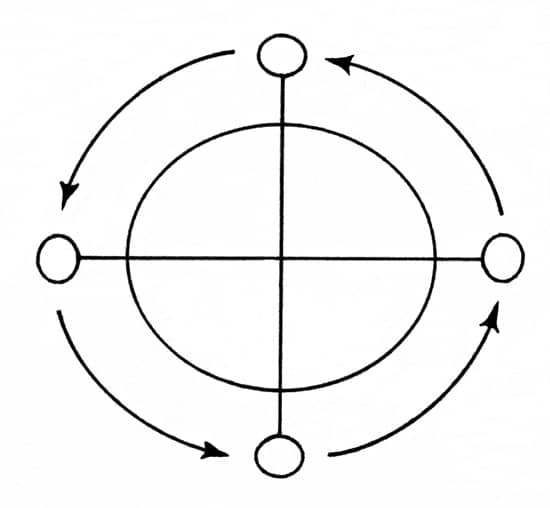
Above: Bakongo Cosmogram
COSMOGRAMS: SPIRITUAL AND MA-MATERIAL WORLDS
Traditional Bakongo (Kongo) people living along the Atlantic coast of Africa utilized the Yowa cosmogram, a circumference with a cross drawn in it with disks at each end to represent four distinct dimensions where the human soul is “indestructible” and in constant motion; “God is imagined at the top, the dead at the bottom and the water in between” 1
In some Caribbean countries, the Yowa cosmogram becomes the Nkisi Sarabanda, where the circumference is drawn out with white chalk on the side of a small kettle containing various amulets. “One of the major functions of the cosmogram Kongo, is to validate a space on which to stand a person”2 on.
The Haitian Vévé originated from the Fon and Kongo cosmogram rituals. The Vévé’s geometric ground signs embellish a space and acts as a beacon for the Loa (spirits) who are called upon by the Houngan (priest) or Mambo (priestess) to partake in a ritual.
In a rare interview with New Art International Magazine (published Oct 1988) Jean Michel Basquiat stated, “I’ve never been to Africa. I’m an artist who has been influenced by his New York environment. But I have a cultural memory: I don’t need to look for it, it exists. It’s over there, in Africa. That doesn’t mean that I have to go live there. Our cultural memory follows us everywhere, wherever we live.” 15
West and Central African derived symbology in Jean Mitchel Basquiat’s work emerged first, not in the shape of cosmograms but in the form of Loas and Orisha for example…
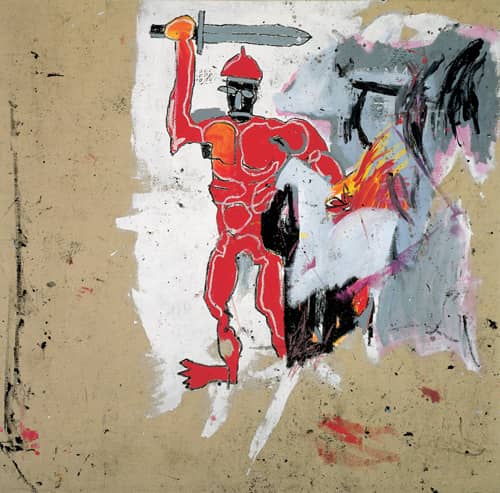
Above: Untitled (Red Warrior) by Jean Michel Basquait
Untitled (Red Warrior),1981 bears a resemblance to the Orisha Shango, referred to as Chango in Haitian Vodou. In Palo he is known as Siete Rayos (7 rays). Shango is the god of thunder, lightning and fire, dance and drums. In Untitled (Red Warrior) the red figure appears in battle position, one arm up, holding a sword, in place of Shango’s double sided axe. The other arm down rousing a fire from his hand, and what seems to look like darkened skies and thunder in the background. Self-Portrait (1982) equally displayed the lone Shango figure, this time brandishing a double sided axe on his left hand. To his right, a broad reddish mark symbolizing thunder or fire vertically charging.
Other works like Untitled (1981) bares another warrior like figure, Ogun (Yoruba) referred to as Ogum in Haitian Vodou. He is the Orisha, Loa (God) of war and metals. His arms wide open, right hand full of arrows / his left hand holds a metal sword. Above him words, scribbled“oppressed,” and what appears to be the word, “absorbed.” Historian, Robert Ferris Thompson further added, “the interpretation here is clearly linked to the left-right nuancing of objects and ideas with the left being the covert side, where mystic war is waged by secret means, whereas open warfare belongs to the more positive right-hand.”4
Eshu/Elegua’s earliest manifestation can be traced to ”Famous,” (1982) a free standing double sided panel painting. Elegua; represented as a black head with cowry shells for eyes, nose, mouth and a background full of secular and religious symbols. Author Edwidge Danticat, has described Elegua in Basquiat’s work as “the master of the crossroads, the opening, the one through whom we enter.”8 “Eshu” on the other hand is the trickster, the “famous” one, “thousands honor him today in Rio de Janeiro.”8 Spiritual practitioners often offer candy to Eshu as he is also represented as child.







